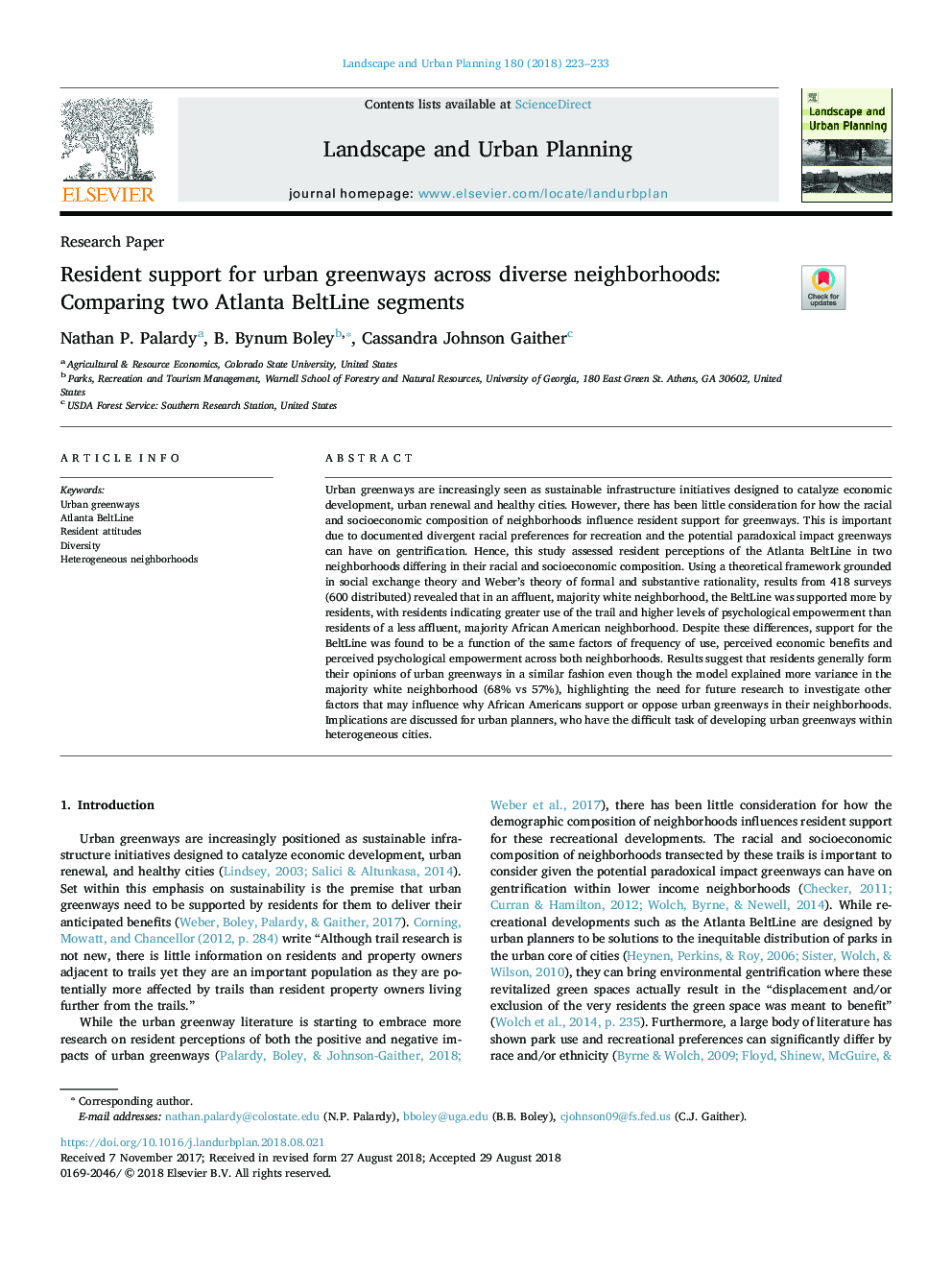| Article ID | Journal | Published Year | Pages | File Type |
|---|---|---|---|---|
| 11005240 | Landscape and Urban Planning | 2018 | 11 Pages |
Abstract
Urban greenways are increasingly seen as sustainable infrastructure initiatives designed to catalyze economic development, urban renewal and healthy cities. However, there has been little consideration for how the racial and socioeconomic composition of neighborhoods influence resident support for greenways. This is important due to documented divergent racial preferences for recreation and the potential paradoxical impact greenways can have on gentrification. Hence, this study assessed resident perceptions of the Atlanta BeltLine in two neighborhoods differing in their racial and socioeconomic composition. Using a theoretical framework grounded in social exchange theory and Weber's theory of formal and substantive rationality, results from 418 surveys (600 distributed) revealed that in an affluent, majority white neighborhood, the BeltLine was supported more by residents, with residents indicating greater use of the trail and higher levels of psychological empowerment than residents of a less affluent, majority African American neighborhood. Despite these differences, support for the BeltLine was found to be a function of the same factors of frequency of use, perceived economic benefits and perceived psychological empowerment across both neighborhoods. Results suggest that residents generally form their opinions of urban greenways in a similar fashion even though the model explained more variance in the majority white neighborhood (68% vs 57%), highlighting the need for future research to investigate other factors that may influence why African Americans support or oppose urban greenways in their neighborhoods. Implications are discussed for urban planners, who have the difficult task of developing urban greenways within heterogeneous cities.
Related Topics
Life Sciences
Agricultural and Biological Sciences
Ecology, Evolution, Behavior and Systematics
Authors
Nathan P. Palardy, B. Bynum Boley, Cassandra Johnson Gaither,
